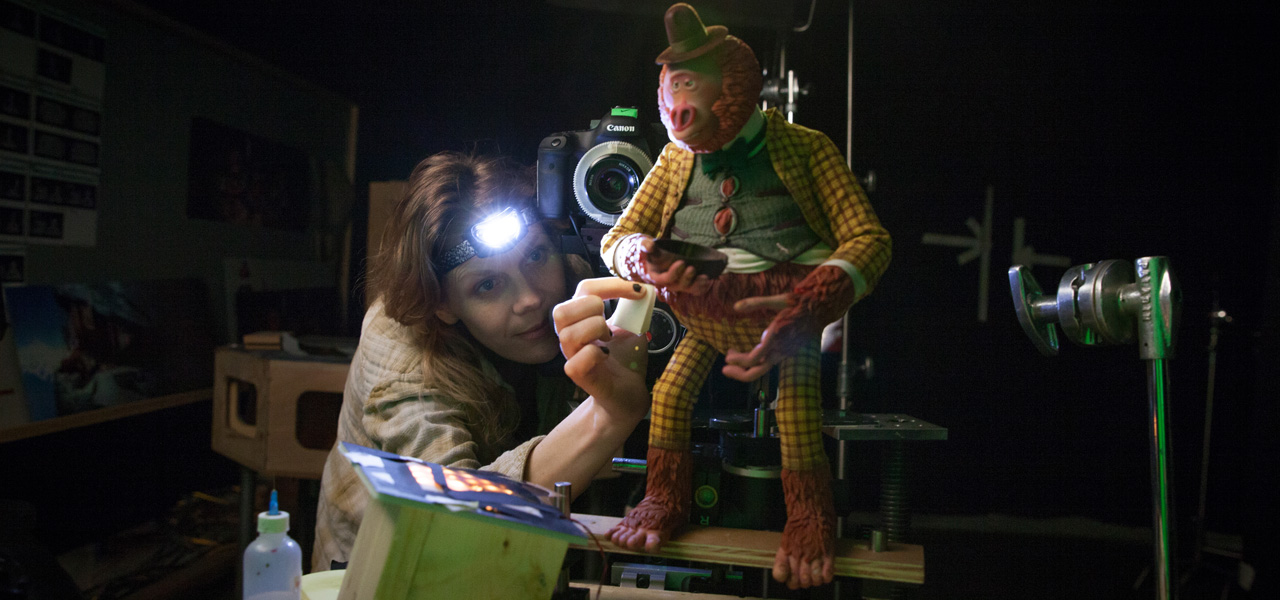
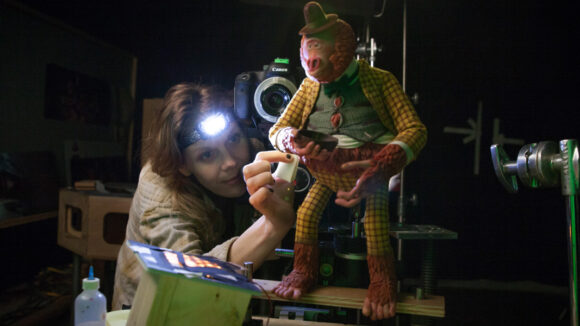
Laika Reveals The Hairy Business Of Animating Fur For ‘Missing Link’
The latest Laika stop-motion film, Missing Link, features a hirsute character covered head to toe in what can be one of the toughest elements to animate: fur.
Although the studio has not shied away from fur previously (think, Monkey in Kubo and the Two Strings), here in Mr. Link was a character that had rows and rows of fur clumps that were almost like scales, a character who would be on-screen for most of the film, and a character who would need to appear in windy conditions on the ocean and in the Himalayas.
Cartoon Brew spoke to several members of the Laika crew about the engineering behind the fur of the Mr. Link puppet, and the ultimate decision to accomplish ‘fur in the wind’ shots with UV paint and meticulous 2d compositing.
What should Mr. Link’s fur look like?
In many stop-motion films, furry characters often exhibit what is known as boil, crawl, or chatter amongst the fur – it’s the result of the hair moving between frames or from the animator moving the puppet. “It can be a pertinent and well-made aesthetic choice,” acknowledged Missing Link director Chris Butler. “I love to see old stop motion that has that feel to it. There is something charming about it, but I think it has to be a reasoned choice. You have to put thought into it. It shouldn’t happen by accident, and certainly the level of sophistication that we are aiming for in our animation and our design means I wanted to address hair in a way that honored the amount of sophistication that was going on all around it.”
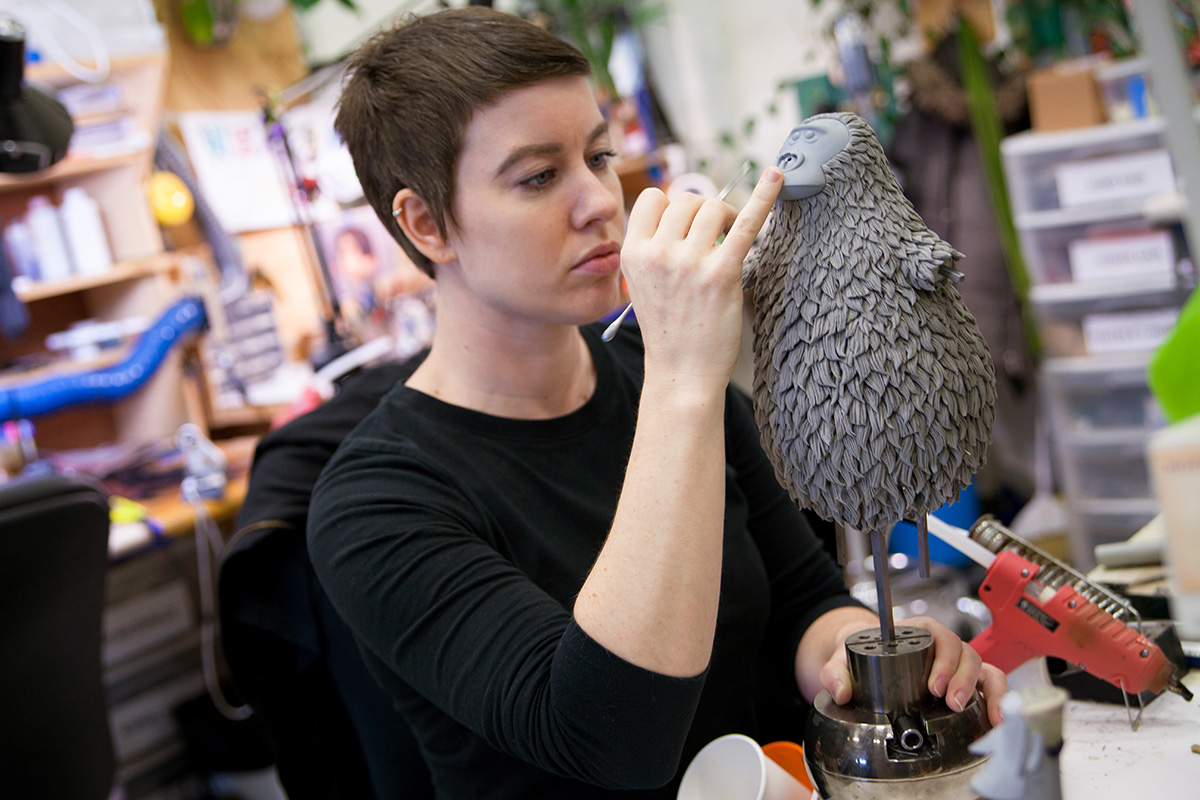
This is why, says Butler, Mr. Link’s hair became very stylized, almost graphic in nature. It was still a mammoth task, and the director marvels at the work of Laika’s artists behind the hair, especially given the amount of action Link is required to do, “from jumping around, walking, throwing his arms around, crashing through walls, hanging onto the side of a ship, and even running through a blizzard. It’s an incredible piece of engineering.”
The complex process of making scale-y fur
Indeed, skilled engineering was a major part of the process. The puppet department at Laika explored many different materials initially referenced for Link’s fur build, including fabrics, before landing on a mix of silicones and urethanes. “We identified aesthetic and performance needs, regarding depth and break points in the surface fur of Link’s body,” said Laika puppet fabrication supervisor John Craney. “The development team paid particular attention to Link from the shoulders up for the greatest level of articulation, acknowledging also this portion of Link’s body had the majority of film frame focus.“
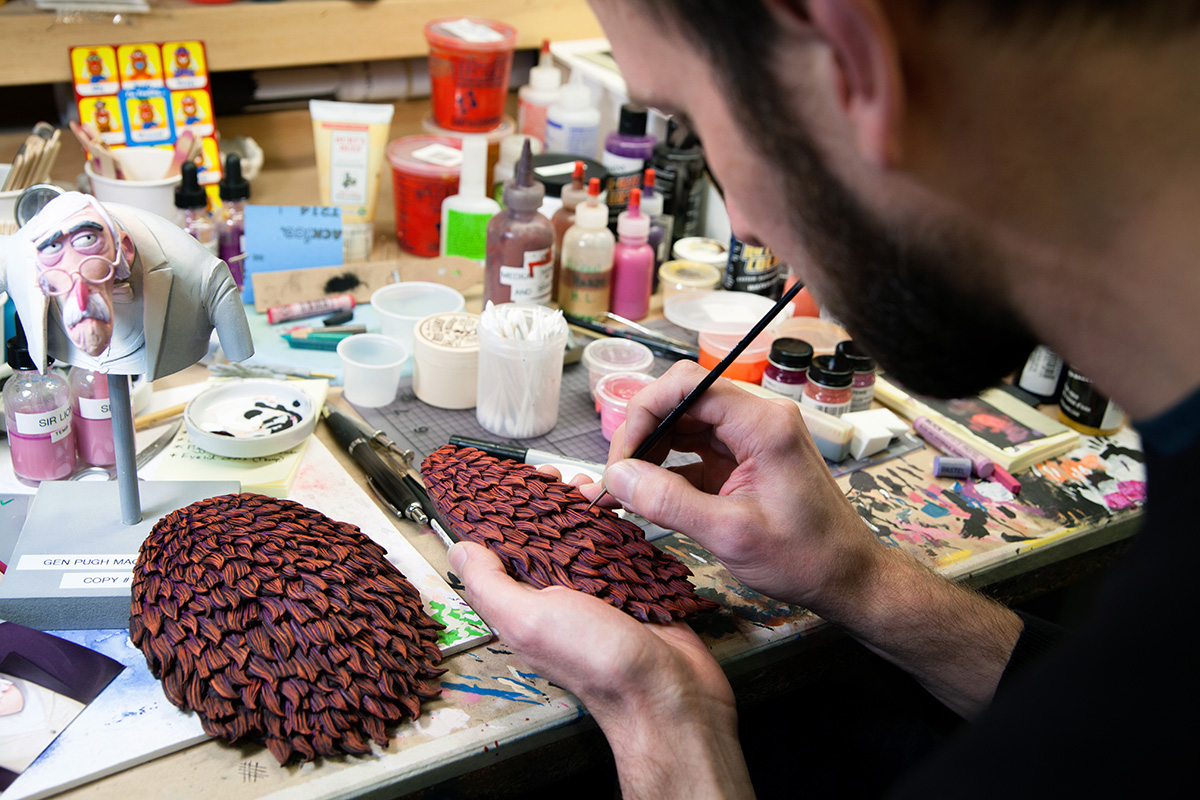
Another reason behind this mix of materials was the need for a copy-and-repeat casting solution, given the intricacy of the design style, and Laika’s requirement to service duplicate puppets during production. The character design also called for Link to be made up of hundreds of individual tufts of clumps of fur that effectively acted like scales moving against one another.
Ultimately, Link’s fur was made of body skin panels, as Craney explains. “Each fur piece is elevated and cast in a much denser – higher shore range – silicone and then backed with a significantly softer skin. The resulting panels, when applied, echoed the shifting interior core driven by the armature. This gave us believable fur articulation and separation without the need to control every individual fur piece.”
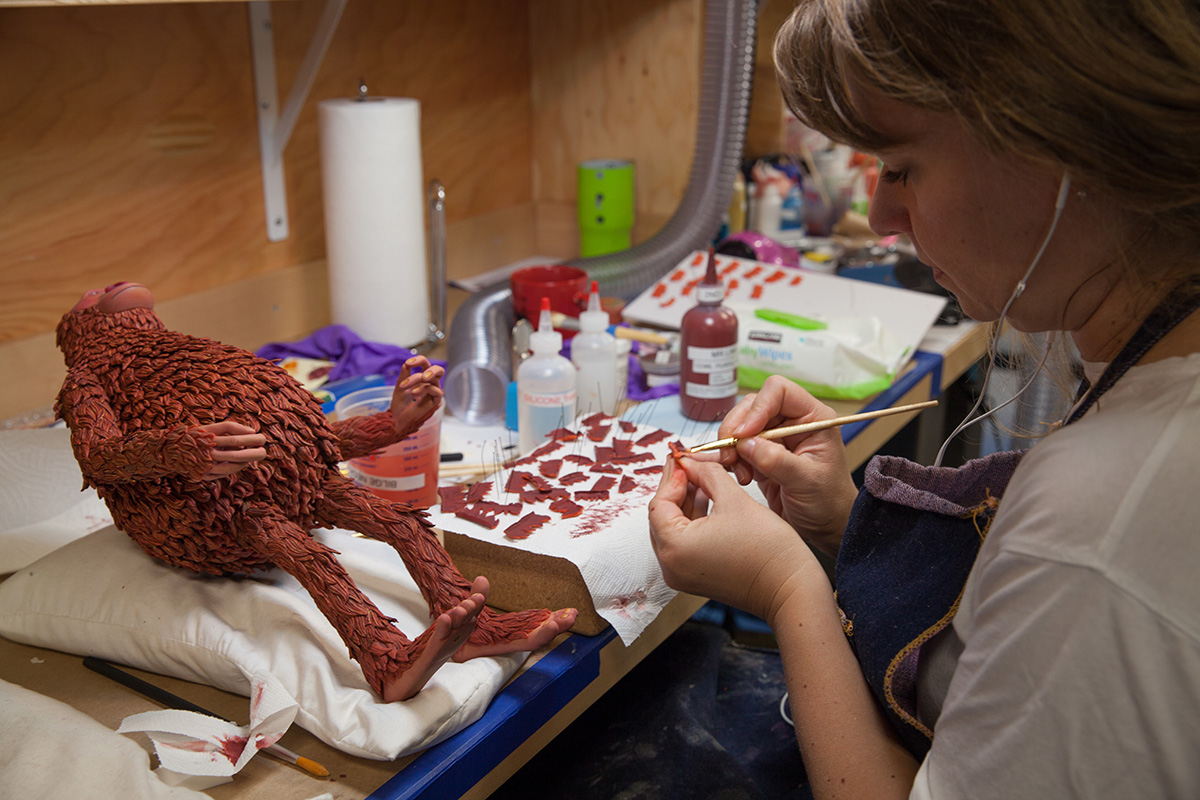
OK, so how do we actually animate this fur?
For areas directly surrounding Mr. Link’s face, the silicone fur was animated via replacement animation. Animators would remove and replace a 3d printed ring that changed the shape of the fur. However, dealing with Link’s fur in more dramatic scenes, such as the storm at sea and in the Himalayas was, says Laika animation supervisor Brad Schiff, “a journey.”
Since the character’s body was covered with stylized silicone hair, the usual approach of wiring every moving part was not an option – animators wouldn’t be easily able to control it having to grab the puppet every frame. Laika therefore embarked on a series of fur animation tests.
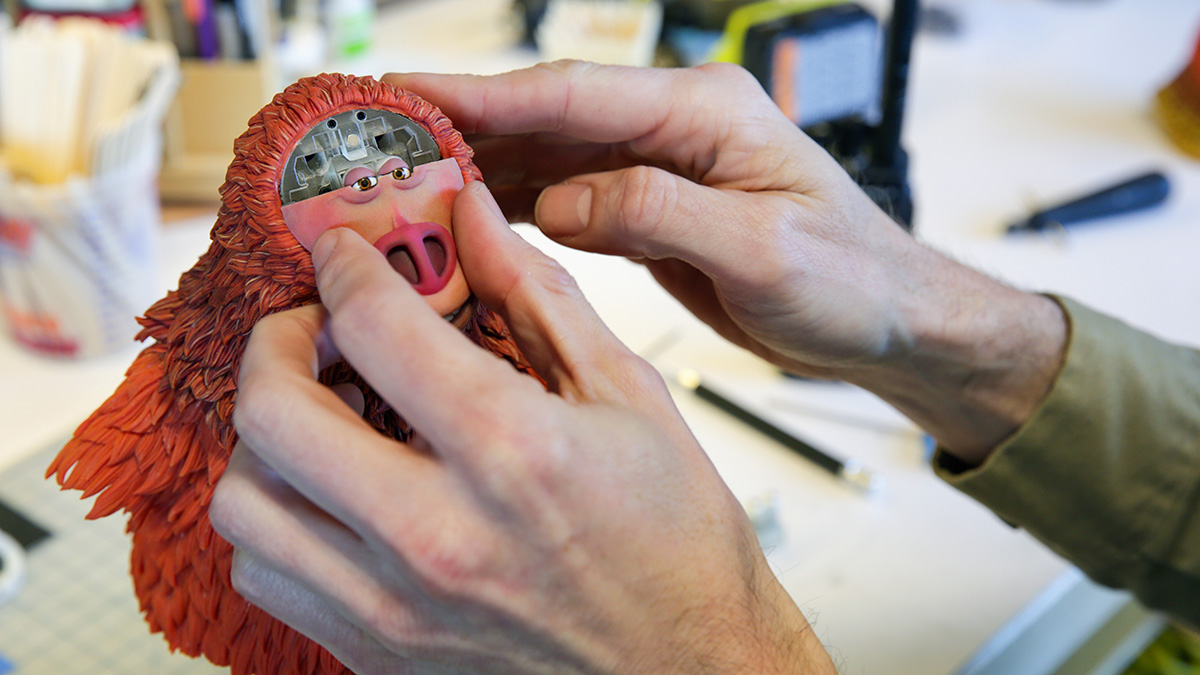
“We first tried a similar technique to what we did with Monkey on Kubo where we strategically attached animatable – wired – pieces of hair in an area where the viewers’ eyes were going to be,” explained Schiff. “Typically we attach some on the head, neck, shoulders and a few on chest. This was enough to give the illusion that Monkey’s entire coat was blowing, but with Link, because of his shape and size, we found this technique not to be as successful.”
Ultimately, the body fur animation would be realized by Laika’s visual effects team (see below), but further testing was arranged by the puppet department to determine the level of fur movement. This started with the department wiring up a two-by-two inch test square of Link’s fur. “Every piece of fur on this test puppet was articulated,” said Schiff. “A stop-motion animator on set animated some different intensities of wind going through the test square of fur. It was through these tests [that] we came up with a range of how much and what kind of movement we wanted in his fur.”
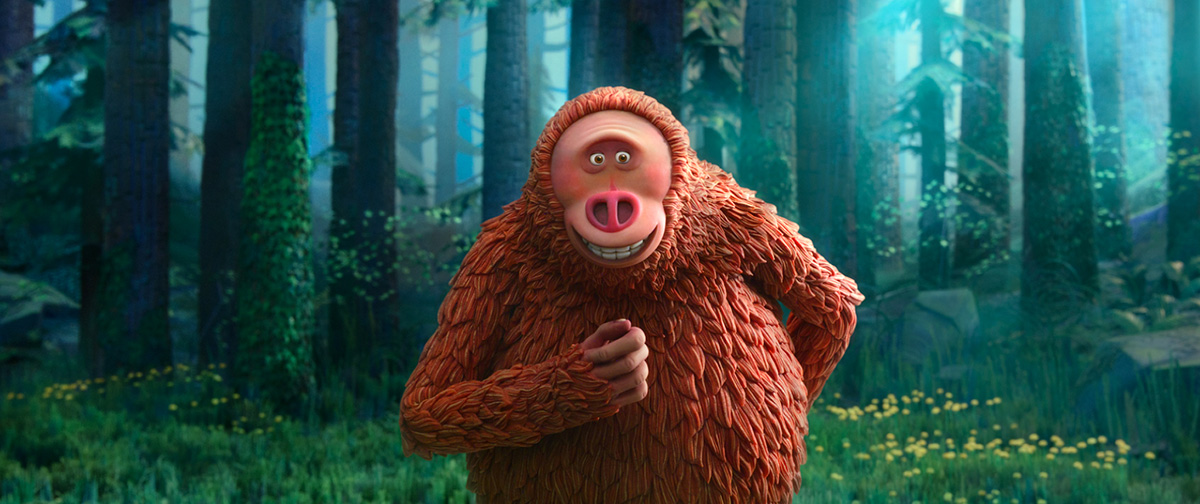
Solving the problem with UV paint
The decision to rely on visual effects for certain fur shots meant that, on set, Laika’s animators did not move the fur at all. Instead, the tips of Link’s fur were treated with invisible red UV paint. “In normal lighting conditions the paint dries clear, so you can’t see it,” noted Schiff. “But when you blast it with UV light, it returns a bright red color. On every frame, the puppet would be posed and then we’d shoot an exposure with the scene lighting. Then the camera team turned off the lights, switch on the UV light, and capture a second exposure. Imagine a Sasquatch-shaped Christmas tree decorated with red lights. That’s what the second exposure looked like.”
The vfx team was then able to take the second exposure into the compositing tool Nuke and use the red channel as an alpha to drive distortion. “Because we treated the tips of the fur with more paint than the base, Nuke was used to drive more movement into the tips, similar to what we were seeing in the original animation tests,” said Schiff. “The compositing team also developed some custom gizmos that enabled artists to have more control over the level of distortion and take further direction on performance from Chris Butler and myself.”
Laika had employed the UV paint solution previously, for the Moon Beast in Kubo and the Two Strings. There it enabled visual effects artists to highlight specific areas on that puppet that could be treated in post production for a specific look. For Link, the fur animation effect is subtle but crucial for selling the character in those more extreme situations. It’s an effect that was also heavily designed, as visual effects supervisor Steve Emerson explains.
“Chris Butler put together an extremely detailed wind script that we had to follow. So, shot by shot, he would talk about how much wind, the intensity of the wind, and when it would taper off. What we were able to do was take one of the color channels, which would give us a white value that was opaque at the tip and partially transparent at the base. And then we used that light value to drive distortion in Nuke. We’d make the fur wiggle, just like fur would wiggle in the wind. It was a creative solution to a big, big problem that we were up against about a year and a half ago.”

.png)